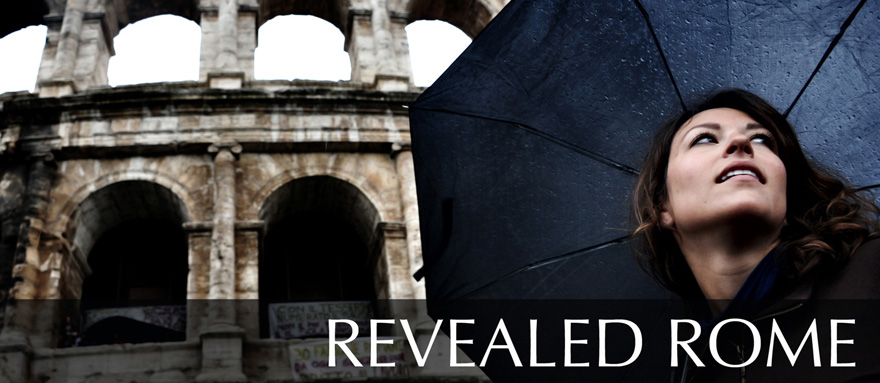Today, the neighborhood of San Lorenzo is known for its students, grungy atmosphere, graffiti… and as a place you might not exactly want to wander around alone late at night.
But it should be known for something else, too: the magnificent church that gave the quarter its name.
First off, San Lorenzo fuori le Mura (or "St. Lawrence outside the Walls," because it is — justbarely — outside the city center) is ancient. Literally. Better yet, more of the ancient design has survived here than in Rome's (admittedly many) other ancient churches. Emperor Constantine, the first Christian emperor of Rome, first built an oratory here in the 4th century; the church itself came in the 5th century and was reconstructed by the Byzantines in the 6th.
And there are more than traces of the 5th- and 6th-century structures today. Walk up to the very front of the church and around the altar, and you're exploring the same aisles and chancel that the ancients built (below). Not only that, but the mosaic above you — restored in the Renaissance to the brilliant colors you see today — dates back to the Byzantines, too. 
Okay, so the church is ancient, and it's beautiful. Yeah, yeah. What else?
Well, it's built on the spot where St. Lawrence himself is buried. One of Rome's most important saints, Lawrence met his fate during Valerian's persection of Christians in 258 A.D., and — the story has it — was grilled to death. (The Vatican has a sense of humor about the whole thing: Today, he's the patron saint of cooks and chefs).
Lawrence was buried in Christian catacombs here, and when Constantine became emperor, he built a shrine and funerary hall at Lawrence's tomb. That's all directly under the church's altar today. And if you peek through one of the grates under the altar, and bring a flashlight (or a flash camera!), you can see some of the ancient tunnels that, presumably, lead down into those catacombs. 
If that doesn't do it for you, make sure you also check out the mysterious marble slab behind the altar: According to tradition, this is where Lawrence's body was laid after he was grilled… and it left a stain that would never go away.
Not a big fan of St. Lawrence? Hey, it's okay. The church also has the remains of the martyrs St. Stephen and St. Justin, also beneath the altar. And if none of these ancient folks do it for you, then try the gloriously-decorated Chapel of Pope Pius IX, where the longest-reigning pope in history — as well as the pope who convened the First Vatican Council and decreed the dogma of the immaculate conception of Mary — is interred. The pope, who died in 1878, has been kept visible for the faithful today, with just a silver mask covering his face.
All this, of course, is leaving lots of things out. Like the gorgeous 13th-century episcopal throne and marble screen, inlaid with precious porphyry and granite. Or the 13th-century frescoes, still in good condition, on the exterior of the church as you enter. Or the lovely 12th-century cloister, complete with fragments of ancient inscriptions and sarcophagi… and with the remnant of an all-too-modern bomb, courtesy of the Allies, that hit the cloister in World War II.
I could go on. Instead, I'll just leave you with one last gem: a 2nd-century sarcophagus depicting a pagan marriage feast. (Today, incongruously, it holds the 13th-century remains of Cardinal Guglielmo Fieschi). 
The church is open daily from 7:30am-12:30pm, 3:30pm-7pm, and on Sundays from 7.30am-12.30pm and 4pm-8pm. It's located at Piazzale del Verano, 3, in the heart of San Lorenzo — a 20-minute walk from the Termini train station, or a 10-minute walk from the Policlinico metro stop on line B. Click here for a map.
You might also like:


















